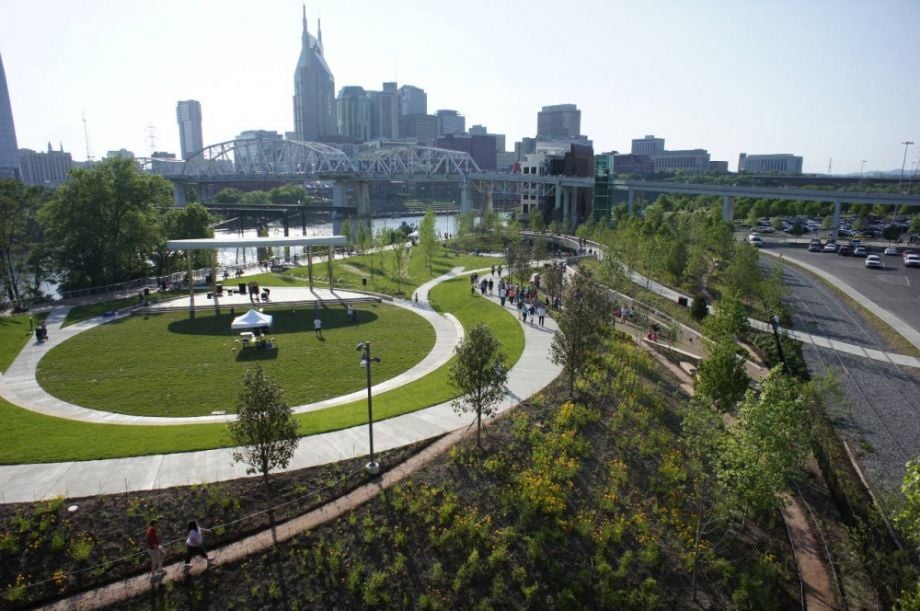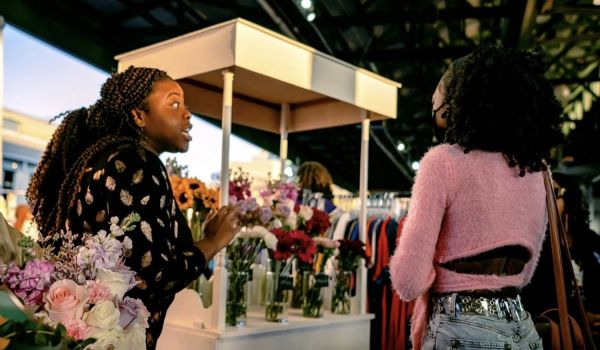Whenever a news story opens by comparing a given city to ultra-hip hotspots like Portland and Austin, prepare to cringe. Usually, it means you’re in for a romp by a writer shocked and giddy that yes, real urban life exists outside the places normally spotlighted in trend pieces.
So it comes as a relief that the New York Times, in an article this week on economic development in Nashville, forsakes the conventional cool-urbanites-doing-cool-things anecdotes and focuses on actual economic drivers — even if overlooks the smaller, more gradual strategies that are more likely attracting new residents to the Tennessee capital.
The main development project considered in the Times article is the Music City Center, a planned $623 million convention center complex spanning 19 acres and complete with a guitar-shaped building. Here’s a curious detail: Far down in the story, writer Kim Severson acknowledges that experts increasingly view large-scale development projects, like convention centers, as outdated economic strategies. (In a story for the fall 2009 issue of the old Next American City print magazine, Josh Stephens found that “Many convention centers, it turns out, limp along in a spectral guise of success: Plenty of them do robust business, but almost none generate the revenues that they promise.”)
One paragraph in the Times story is even dedicated to the argument that “[T]o be a truly great city… [Nashville] has to be a place that tends to its residents first and tourists second.” Yet even with all this in mind, it seems as though the city of Nashville can’t resist touting the convention center’s allure, what with promises of such tourist-driven events as the 2015 National Rifle Association conference — sure to attract attention given the ongoing gun control debate.
Of a much different piece than the glitzy Music City Center is the work of one local organization striving to improve the city bit by bit. The Nashville Civic Design Center, along with its executive director Julia Landstreet, landed on Next City’s 2012 Disruption Index for its approach toward advocating for smarter, more progressive and sustainable public design.
Landstreet emphasized that Nashville’s resurgence was not an overnight success. “It’s been walking down this road for a while,” she told Next City, detailing ongoing projects that, if not as sexy as a convention center that resembles a giant fretboard, are densifying and populating the downtown with new housing and office space, not to mention improving park space and transportation options for residents.
Chief among these is a 75-acre parcel of land on the Cumberland River, in the shadow of LP Field, home of the Tennessee Titans football team. For years its dominant tenant has been a metal recycling factory — good for the environment, perhaps, but not so much for a city’s downtown. Last year, the Civic Design Center held a design competition calling for proposals to reimagine the waterfront property, netting 139 teams from 29 countries to participate.
So far, the future of this still-empty chunk of land hasn’t moved beyond the ideas stage. But, Landstreet said, the proposals have gotten “keen interest” from the city. Helping matters along is the fact that Hargreaves Associates, an international landscape architecture firm, developed the adjacent 6.5-acre Cumberland Park, which opened last year and reconnects the city to at least part of its riverfront.
There’s more: Across the Cumberland River is Rolling Mill Hill, the site of an old county hospital and a collection of former trolley barns, which have been preserved and converted into housing and office space, respectively. The city also has plans to implement a bus rapid transit system, slated to stretch 7.5 miles from east to west Nashville, zigzagging through downtown in between. The Nashville Metropolitan Transit Authority will likely seek federal funding to create the BRT corridor.
Drawing attention to these (relatively) smaller development projects isn’t to knock the Times story or, necessarily, the convention center — in fact, Landstreet said, her organization helped with a public art component at the Music City Center. But with an additional million people expected to populate the 10-county Cumberland Region around Nashville by 2035, infill in the downtown will determine how the city grows and whether it becomes, in the parlance of the Times, an “it” city.
















